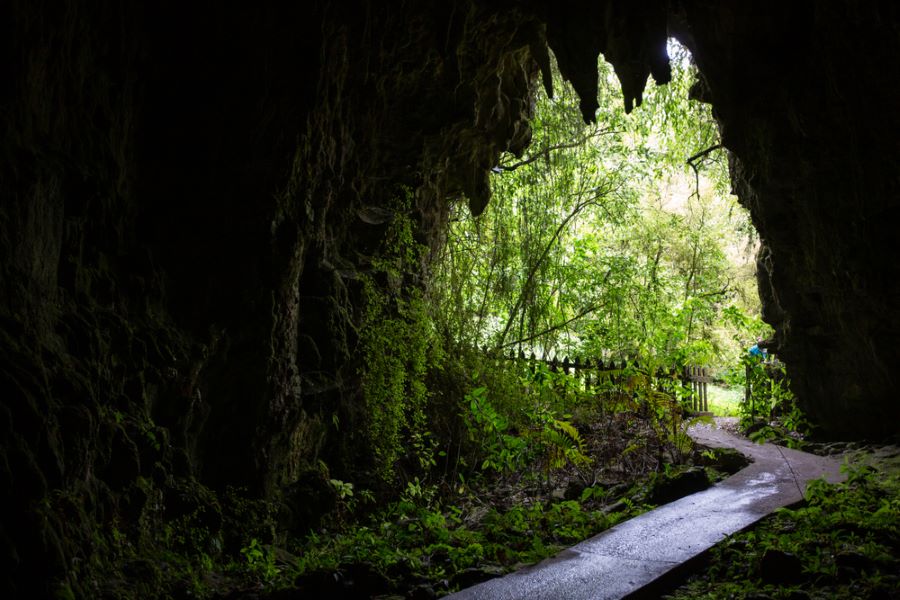When people are traveling, they’re often looking for one-of-a-kind experiences that take their breath away. Fortunately, this big wide wonderful world holds many opportunities to behold jaw-dropping beauty.
Case in point, the Waitomo Glowworm Caves, a truly magical place made up of more than 300 caves and underground passages, and a must-see for any visitors to New Zealand. These ethereal caves glow with the phosphorescence of millions of tiny glowworms, producing a stunningly serene and mystical effect. The caves are located about an hour’s ride south of Hamilton, or two and a half hours south of Auckland. (Or, for all of us Lord of the Rings nerds, just over an hour west of Hobbiton)

Waitomo Glowworm Caves, New Zealand
The caves were discovered in 1887 by local Maori Chief Tane Tinorau and English surveyor Fred Mace. The pair were exploring the Waitomo cave system when they came across a cave with a ceiling covered in tiny, glowing lights, which they called “Glowworm Grotto.” They built a raft and floated into the cave, using candles to light their way. The caves were opened to tourists in 1889, becoming one of the first commercial cave tours in the world. They have been a popular tourist destination ever since, and they attract over a million visitors a year from all over the world. The caves are now a UNESCO World Heritage Site.
Although the caves are often referred to as the “firefly caves,” the tiny creatures in the caves are not actually fireflies. Fireflies are beetles, while glowworms are a type of gnat. The glowworms produce their light to attract prey. The light is produced by a chemical reaction in the glowworm’s abdomen. The glowworms in the Waitomo Glowworm Caves are most active at night, which is when they are most likely to catch prey. A crucial part of the local ecosystem, the glowworms help to control insect populations and they provide food for other animals, such as bats and birds.
You Might Also Enjoy: Offbeat Travel: The Chocolate Hills of the Philippines

Waitomo Glowworm Caves, Waikato, New Zealand
All has not always been bight inside the caves, however. In 1979, the glowworm population in the caves declined sharply due to a combination of factors, including pollution and over-crowding. The caves were closed for a period of time while the glowworm population recovered. The glowworm population has since rebounded, and the caves are now open year-round for guided tours. The tours typically last about an hour and take visitors through a series of chambers, including the Glowworm Grotto, the Cathedral, and the Mud Room.
Have you ever been to the Waitomo Glowworm Caves? Tell us about it in the comments below!


Leave a Reply